Why Do Tibetan Singing Bowls Sing and Make Water Droplets Dance?
Tibetan Singing Bowls when filled with water and rubbed or hit with a leather-wrapped mallet, emit a humming sound and water droplets fly from the surface and appear to dance.
Researcher have begun to understand why this occurs and how it relates to other properties fluids and other processes such as fuel injection in cars.
The research may have application in other processes to create droplets.
Research published in the journal Non linearity discovered what was happening and provided an explanation and model for the behavior.
The Tibetan bowls are a type of inverted bell made from an alloy of bronze containing copper, silver, zinc, gold, tin, iron and nickel. The bell is rung by hitting or rubbing its rim with a wooden mallet or one wrapped in leather. This action makes the rim and sides of the bowl to vibrate producing a bell-like sound.

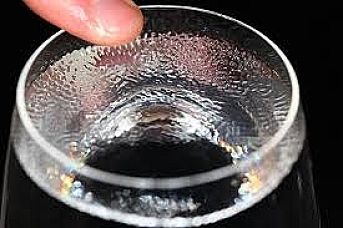

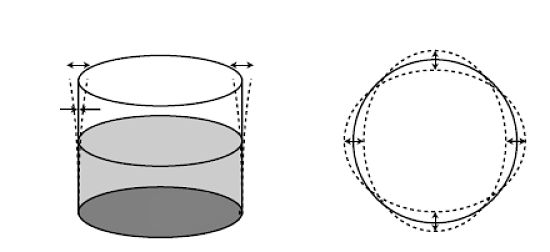
The vibrations also generate tiny waves on the surface of the water. When the waves are large enough the waves break and interact with the reflections, causing water droplets to be ejected from the surface.
The high-speed videos allowed the researchers to see how the droplets were created, ejected from the surface and even bounced on the surface of the water. The new findings could provide better ways for processes such as perfume sprays, room freshener devices, fuel injectors and others where droplet generation is important.
The same thing happens when you rub on the edge of a wine glass. If the glass is filled with water or wine the surface get disturbed, initially as a series of small waves, but the wave pattern can become chaotic.
The phenomenon is related to resonance. You only get the effect when your rubbing speed and action corresponds with the natural resonance frequency of the glass. Glasses with different amounts of fluid have different resonance frequencies and this inspired the design of the glass harmonica by Benjamin Franklin. The friction between the wet finger and the rim of the wineglass induces vibration in the glass walls of the wineglass. The induced oscillation produces a loud, pure tone. The frequency of the oscillations and so the sound depends on how much liquid is in the glass. Adding liquid increases the fluid pressure that retards the wineglass vibration so as to lower the frequency of vibration. If you place another glass with about the same volume of water next to the one you are rubbing it too will oscillate and 'sing'. You can induce the same thing using your voice and a speaker cone and adjusting the frequency.
The Tibetan singing bowl is much easier to oscillate than a wineglass, and so its resonance frequency is much smaller than for the glass.
To better understand the link with resonance and how the waves are created and produce the dance of the water droplets, a loudspeaker was used. The frequency of sound emitted from the speaker was varied. When the sound frequency corresponded with the resonant frequency of the bowl the waves would be appear on the surface of the fluid.
The explanation for what happens lies in understanding Faraday waves, which are generated when a fluid such as wine of water vibrates within a confined space such as a glass or bowl, surrounded by the walls of the container. As the bowl is rubbed and matched the natural resonance frequency of the bowl the edge begins to oscillate and change shape, inducing a slightly oval shape which moves in and out. This is similar to what is seen when a wine glass vibrates.

But at a certain point the water becomes unstable - producing chaotic waves that emit showers of droplets. The waves as they reflect back from the walls of the bowl crash into one another, creating droplets that fly into the air.
Under certain conditions, droplets can actually bounce several times on the surface, and even skip on the water`s surface.

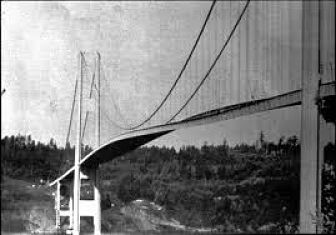

Resonance is a common but largely misunderstood phenomenon. It can be extremely powerful as it generates a catalytic effect where a small vibration generates a feed-back loop generating oscillations in a structure. A wine glass can be shattered by sound at the right frequency.
The most famous example is 'Galloping Girtie' the Tacoma Narrows Suspension Bridge that opened to traffic on July 1, 1940, and dramatically swayed and destroyed itself and fell into Puget Sound three months later due to a strong, but not gale force wind. This event is a classic example of induced resonance with the wind providing a stimulus and inducing vibration that matched the natural resonance frequency of the bridge and suspended decking. The cause of the failure was aeroelastic flutter that applies to all objects moving through the air. Flutter is a positive-feedback mechanism leading to potentially destructive vibration that links with a structure`s natural vibration resonance and can produce rapid periodic vibration. Flutter is induced by a positive feedback between the structure's natural vibration at resonance and the aerodynamic forces of the wind or other fluid. When the energy of the excitation, though very small, exceeds the natural damping of the system, the level of vibration increase. The damping effect is minimal at the natural resonance frequency of the structure.
Because of this, all engineering structures that area exposed to aerodynamic forces such as wind and water - including wings, aerofoils, wind turbines, bridges, towers, buildings, chimneys and bridges - are now designed to avoid flutter. The classic example of flutter phenomena and its power is the wind-induced collapse of the original Tacoma Narrows Bridge. Another is a playground swing located in the town of Firmat which appears to regularly`swings itself`producing large swings that led many people to believe the swig is haunted. There have been many other examples of foot bridges that vibrate and swing in the wind.
How can the tiny force of the wind bring down a huge bridge? As explained it is due to the accumulation of amounts of energy in a feed back system. Resonance has been used to explain many of the perpetual motion machines that have been invented.
One such device is the Two-Stage Mechanical Oscillator - A Mechanical Amplifier invented by Velijko Milovic that can be used to drive a hand water pump with a pendulum. All that is required to drive the pump is a tiny push of the pendulum using your little finger. For this device the author claimed that the centrifugal force of the pendulum and gravity created the energy to drive the pump once the swing was started.
See videos and description and research paper on the centrifugal force and the two stage oscillator.
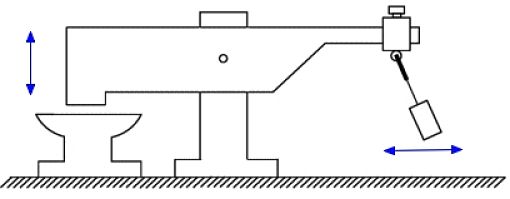
Input energy for starting the process of pumping, in form of occasional pushing of the pendulum, is much less than with typical hand pumps. To get the water running out of the pump, the pendulum needs to be out of balance. After that, based on gravitational potential, the piston starts oscillating and the continuous stream of water is corning out of the output pipe. The pendulum should be occasionally pushed, to maintain the amplitude i.e. the stream of water.
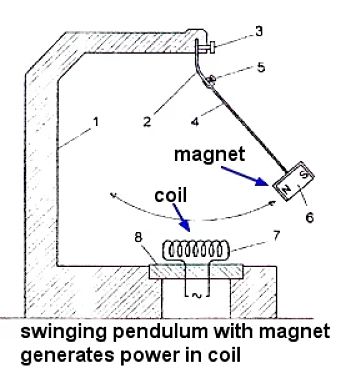
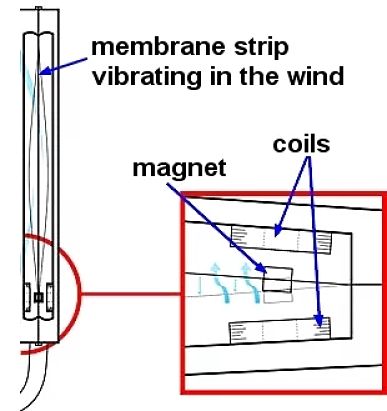
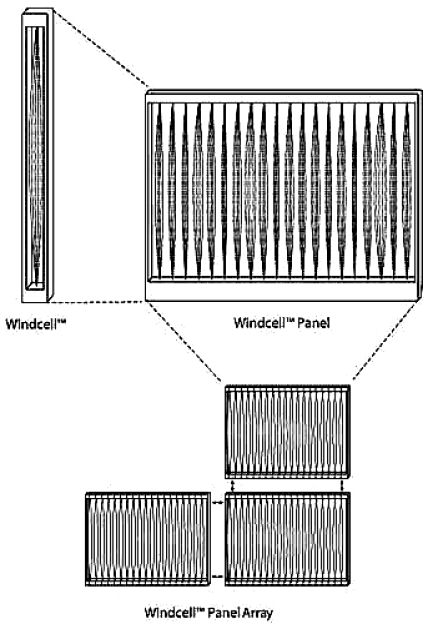
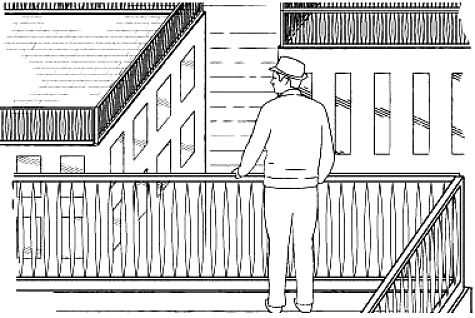
Others have claimed that this is another example of resonance and a 'flutter' type positive feedback mechanism at work with the pendulum storing the energy that is transferred to the rocking arm to do the work of the pump.
Electric Power Generation using Resonance and Flutter
Shawn Frayne has developed a power generating device that uses the phenomenon of flutter.
The device which Frayne calls a Windbelt, is a tautly stretched elastic membrane strip fitted with two small magnets that the wind makes oscillate between two tiny metal coils and generate power. (see diagram)
Prototypes have generated at least 40 milliwatts in low wind speeds of 10-mph, making the Windbelt about 10 to 20 times as efficient as the best micro rotor wind turbine devices and much cheaper.
The device has application in third world countries and for powering small devices.
It could be geared up to larger sizes as panels and panel arrays that could be fitted to the top of buildings and balcony railings.